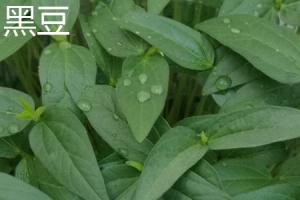What to Do When Tomato Plant Leaves Curl Up
If you are a tomato plant enthusiast, you have probably experienced the frustration of finding your tomato plant leaves curling up. This unfortunate occurrence can be caused by many things, from natural weather conditions to pests or disease. Whatever the cause, tomato plant leaves that curl up can result in decreased fruit production or could harm the plant's overall health. In this article, we will explore the reasons why tomato plant leaves curl up and what you can do to remedy the situation.
Reasons Behind Tomato Plant Leaves Curling Up
There can be various reasons why tomato plant leaves curl up. Here is a list of some of the most common reasons:
Drought Stress: Tomato plants need sufficient water to thrive. If your plant does not receive adequate water, the leaves will curl up and wilt.
Extreme Temperature Fluctuations: Tomato plants are sensitive to sudden changes in temperature. Too much heat or cold can cause the leaves to curl up.
Fungus: Fungal infections like Verticillium wilt or Fusarium can cause tomato plant leaves to curl up, turn yellow, and wilt.
Viral Infections: Tomato plants affected by viruses like Tomato yellow leaf curl virus may experience leaf curling as a symptom.
Pests: Pest infestations like whiteflies, aphids, or spider mites can also cause tomato plant leaves to curl up.
What to Do When Tomato Plant Leaves Curl Up
It is essential to identify the source of the problem before taking any action. Once you have identified the root cause, you can take action to remedy the situation. Here are some steps you can take to save your tomato plant:
1. Watering
If your plant is experiencing drought stress, one of the crucial things you can do is increase watering. Water your plant at least once a day or twice if the weather is hot or dry. Make sure the soil is moist, but not waterlogged, as this can cause further stress or root rot.
2. Temperature Control
Tomato plants prefer a temperature range between 60°F to 85°F. If you live in an area where temperature fluctuations are high, transplant your tomato plant to a pot that you can easily move around. Alternatively, you can erect a hoop house or use a shade cloth to protect your plant from extreme temperature fluctuations.
3. Fungal Infection Treatment
For fungal infections, treatment depends on the severity of the infection. If your plant is only showing mild symptoms of infection, you can remove the infected leaves and apply a fungicide. If the infection is severe, it may be necessary to discard the entire plant to prevent the spreading to other plants.
4. Viral Infection Treatment
Unfortunately, there is no treatment for viral infections in tomato plants. If your plant is suffering from a viral infection, it may be necessary to remove and dispose of the plant to prevent the virus from spreading to other plants. Do not compost the discarded plant, as this will only spread the virus.
5. Pest Control
If your plant is affected by pests, you can use insecticidal soap, neem oil or pyrethrin-based pesticides to eradicate the pests. You can also use sticky traps to attract and trap flying insects like whiteflies, aphids, or thrips. It is essential to follow the instructions on the product label and wear protective gear when applying the pesticide.
Conclusion
Tomato plants are vulnerable to various diseases, pests, and environmental factors that can cause the leaves to curl up. By identifying the cause of the problem and taking the necessary steps to remedy it, you can save your tomato plant and ensure that it produces healthy fruit. Remember, prevention is always better than cure, so make sure to keep your plant healthy by providing sufficient water, proper nutrition, and protecting it from environmental stressors and pests.

 how many times do yo...
how many times do yo... how many planted tre...
how many planted tre... how many pine trees ...
how many pine trees ... how many pecan trees...
how many pecan trees... how many plants comp...
how many plants comp... how many plants can ...
how many plants can ... how many plants and ...
how many plants and ... how many pepper plan...
how many pepper plan...





























